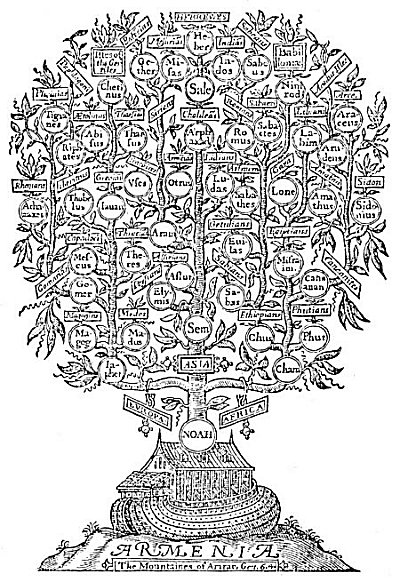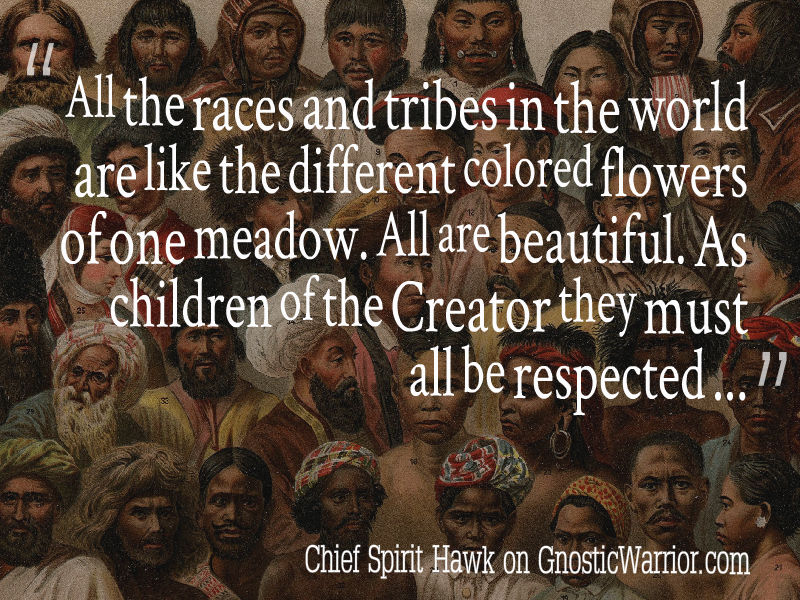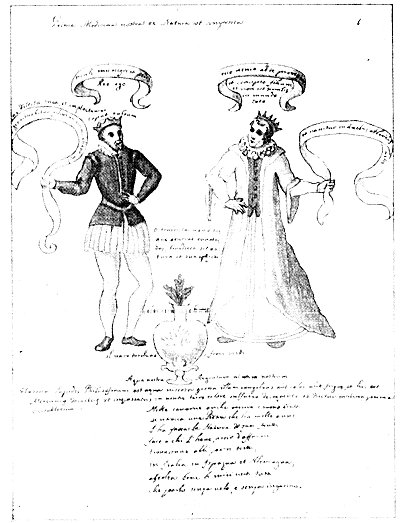The tree has also been accepted as symbolic of the Microcosm, that is, man. According to the esoteric doctrine, man first exists potentially within the body of the world-tree and later blossoms forth into objective manifestation upon its branches. According to an early Greek Mystery myth, the god Zeus fabricated the third race of men from ash trees. The serpent so often shown wound around the trunk of the tree usually signifies the mind–the power of thought–and is the eternal tempter or urge which leads all rational creatures to the ultimate discovery of reality and thus overthrows the rule of the gods. The serpent hidden in the foliage of the universal tree represents the cosmic mind; and in the human tree, the individualized intellect.
The concept that all life originates from seeds caused grain and various plants to be accepted as emblematic of the human spermatozoon, and the tree was therefore symbolic of organized life unfolding from its primitive germ. The growth of the universe from its primitive seed may be likened to the growth of the mighty oak from the tiny acorn. While the tree is apparently much greater than its own source, nevertheless that source contains potentially every branch, twig, and leaf which will later be objectively unfolded by the processes of growth.
Man’s veneration for trees as symbols of the abstract qualities of wisdom and integrity also led him to designate as trees those individuals who possessed these divine qualities to an apparently superhuman degree. Highly illumined philosophers and priests were therefore often referred to as trees or tree men–for example, the Druids, whose name, according to one interpretation, signifies the men of the oak trees, or the initiates of certain Syrian Mysteries who were called cedars; in fact it is far more credible and probable that the famous cedars of Lebanon, cut down for the building of King Solomon’s Temple, were really illumined, initiated sages. The mystic knows that the true supports of God’s Glorious House were not the logs subject to decay but the immortal and imperishable intellects of the tree hierophants.
Trees are repeatedly mentioned in the Old and New Testaments, and in the scriptures of various pagan nations. The Tree of Life and the Tree of the Knowledge of Good and Evil mentioned in Genesis, the burning bush in which the angel appeared to Moses, the famous vine and fig tree of the New Testament, the grove of olives in the Garden of Gethsemane where Jesus went to pray, and the miraculous tree of Revelation, which bore twelve manners of fruit and whose leaves were for the healing of the nations, all bear witness to the esteem in which trees were held by the scribes of Holy Writ. Buddha received his illumination while under the bodhi tree, near Madras in India, and several of the Eastern gods are pictured sitting in meditation beneath the spreading branches of mighty trees. Many of the great sages and saviors carried wands, rods, or staves cut from the wood of sacred trees, as the rods of Moses and Aaron; Gungnir–the spear of Odin–cut from the Tree of Life; and the consecrated rod of Hermes, around which the fighting serpents entwined themselves.
The numerous uses which the ancients made of the tree and its products are factors in its symbolism. Its worship was, to a certain degree, based upon its usefulness. Of this J. P. Lundy writes: “Trees occupy such an important place in the economy of nature by way of attracting and retaining moisture, and shading the water-sources and the soil so as to prevent barrenness and desolation; the), are so
THE TREE OF NOAH.
From the “Breeches” Bible of 1599. Most Bibles published during the Middle Ages contain a section devoted to genealogical tables showing the descent of humanity from Father Adam to the advent of Jesus Christ. The tree growing from the roof of the Ark represents the body of Noah and its three branches, his sons–Shem, Ham, and Japheth. The nations by the descendents of Noah’s three sons are appropriately shown in the circles upon the branches of the tree. While such tables are hopelessly incorrect from a historical point of view, to the symbolist their allegorical interpretations are of inestimable importance.

Moe is the founder of GnosticWarrior.com. He is a father, husband, author, martial arts black belt, and an expert in Gnosticism, the occult, and esotericism.




![How the South Saxons received Eadbert and Eolla, and the West Saxons, Daniel and Aldhelm, for their bishops; and of the writings of the same Aldhelm [705 A.D.] | Book 5 | Chapter 17 How the South Saxons received Eadbert and Eolla, and the West Saxons, Daniel and Aldhelm, for their bishops; and of the writings of the same Aldhelm [705 A.D.] | Book 5 | Chapter 17](https://www.gnosticwarrior.com/wp-content/plugins/contextual-related-posts/default.png)
